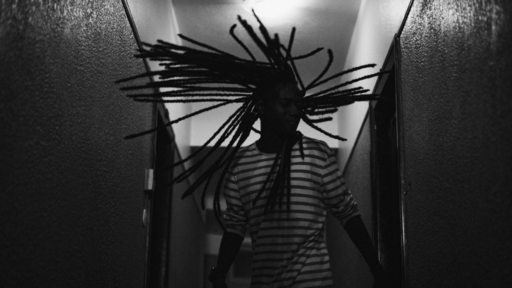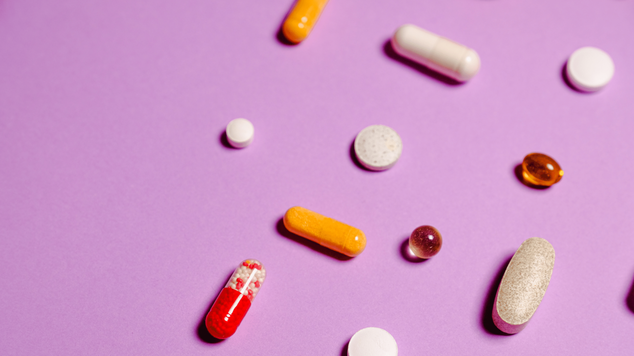Dreads Thinning and Falling Out? Here’s Why

Dreadlocks, ‘locs,’ or ‘dreads’ is an amazing, iconic hairstyle that women and men, particularly African Americans, enjoy. Growing and maintaining locs takes consistency, commitment, and TLC. When you follow these steps, you’ll have fantastic, thick, shiny locs that can last for years. However, it’s not uncommon to see dreads thinning and falling out. If you’ve had one lock of hair fall out in a year, you probably won’t worry about it. However, consistent thinning, shedding, receding hairlines, and even balding is a serious concern. If you have thinning dreadlocks or they are falling out, see your dermatologist as soon as possible.
Symptoms of dreads thinning, receding, or shedding.
The first thing you will notice is one or more signs that your locks are thinning, receding, or shedding. These symptoms include:
- Thinning dreadlocks at the crown
- Thinning at the root
- Tenderness
- Inflammation
- Itchiness
- Locs that easily fall out.
Your dermatologist can take a detailed look at your hair and scalp. The doctor will also assess your general health, family history, medical history and request a blood test or hair biopsy. From there, they can discover one of several reasons behind your dreads thinning and falling out.
1. Beware of Traction Alopecia
Traction alopecia is a form of hair loss and the most common reason for thinning dreadlocks. The repeated tension and pulling on your hair is the main reason for traction alopecia. Twisting your locs tightly, placing them in high buns, and pulling your hair back in ponytails are common reasons. As your hair grows, the weight of the hair can cause thinning and breakage. The strain on the hair follicles causes inflammation, soreness, and itching. Eventually, the hair begins to fall out at the hairline and sides. In some cases, you can lose hair in other parts of the head.
Traction alopecia happens over time, so older African-Americans with dreads are more likely to have the condition. If you have tight, thinner dreadlocks, you are more likely to have traction alopecia in the future. If you catch the symptoms and signs early, you can reverse traction alopecia. However, for most people, the damage can be more severe and need medical intervention. See your dermatologist if you suspect you’re losing your locs due to tight styles. Your dermatologist will review your health history, examine your hair, and provide medical treatments. These can include steroids, antibiotics, or minoxidil to regrow your hair. You will also have to stop tight hairstyles and practices that can cause long-term damage to your precious locs.
2. Central centrifugal cicatricial alopecia
Central centrifugal cicatricial alopecia or CCCA is another common reason for thinning dreadlocks and hair loss. It’s particularly common in Black women but can happen to men and other races as well. CCCA occurs when hair loss starts at the crown of the scalp and moves outwards, almost in a circular direction. The hair follicles are severely damaged and replaced with scar tissue, preventing new hair growth. You will start to notice thinning at the crown, itching, and discomfort. Doctors and scientists have been unable to find the real cause of CCCA.
Treating CCCA
Dreadlocks, braids, sew-ins, hair relaxers, hot combs, and other tight hairstyle practices can cause CCCA. The symptoms can take several years before being noticed, so older women with dreadlocks and braids are more likely to be diagnosed with the condition. There may be some genetic links as well. CCCA is difficult to treat as it’s a chronic, sometimes irreversible condition. At Eternal Dermatology + Aesthetics, we implement treatment options quickly as the damage will be ongoing. Steroids, antibiotics, and steroid injections are the first steps to reduce scarring. Other treatments include Platelet-Rich Plasma (PRP), where we use your blood’s platelets in the scalp. In between treatments, supplements, minoxidil, and lifestyle changes can help. And just like traction alopecia, changing hairstyles and dangerous products can stop further damage.
3. Dreads thinning can be due to scalp infections
Scalp infections are a broad term for any skin infection impacting the scalp. Scalp infections can happen to anyone, even those with dreadlocks. In some cases, your hair growth can slow, or your hair can fall out. There are a few types of infections that can cause hair loss.
- Folliculitis: This is an infection and eventual inflammation of the hair follicles. Bacteria like Staphylococcus aureus, yeast, or fungi can cause folliculitis. Several forms of the condition can develop due to behaviors like shaving or hot water exposure. Folliculitis can look like acne, forming red, itchy bumps. If left untreated, the hair follicles become severely infected, preventing hair growth.
- Seborrheic dermatitis occurs due to an overproduction of sebum, the oil in our hair follicles. As a result, the scalp becomes scaly, oily, and uncomfortable. You might start to see yellow or white flakes on your scalp. Seborrheic dermatitis does not cause hair loss, but it can increase the chances of scalp infections. If this happens during the resting phase of your hair, you can experience thinning hair and hair loss.
- Psoriasis is a common chronic disease where scaly patches of dead skin cells accumulate at the elbows, knees, and other body parts. It can also develop on the scalp. Scalp psoriasis can cause inflammation on the hair follicles, bleeding, and scarring. In some cases, hair loss and stunted hair growth can occur.
Once we diagnose one of these conditions, we can follow up with the necessary treatment. Shampoos, antifungal creams, steroids, microneedling, or light therapy are standard treatment options.
4. Telogen Effluvium and other forms of stress
On average, we lost about 50 to 100 strands of hair daily. If we’re losing a lot more, there may be an underlying condition. Telogen effluvium refers to severe yet temporary hair loss, particularly after a stressful or traumatic event. For example, childbirth, menopause, severe stress, and extreme weight loss can cause telogen effluvium. In addition, hormonal changes can slow down the growth phase, moving more of your hair follicles through the resting (telogen) phase. As a result, your hair can fall out in clumps, or your locs can thin and fall out rapidly.
Your dermatologist will perform different tests to determine if you have telogen effluvium. The condition can correct itself within a few months but will need the proper management. Once you can pinpoint the source of your stress, work on lifestyle changes to improve the situation. A good diet, water intake, and hair supplements can also help. If it’s a hormone-related issue (menopause, for instance), your doctor can provide hormone replacement therapy to improve hair growth and other symptoms.
5. Watch your medication
Some medications, while helpful in some places, can cause hair loss as a side effect. Medication is often a reason for telogen effluvium, meaning the issue will be temporary. However, some drugs can cause permanent hair loss. Blood pressure medications, antidepressants, heart medication, and chemotherapy drugs are common causes of hair loss.
Even with dreadlocks, you are not exempt from the side effects of these drugs. Some antibiotics, antifungal drugs, and certain acne medications can also cause hair loss. Discontinuing birth control pills have also been linked to temporary hair loss.
During your visit with your dermatologist, make sure to reveal all the medications you are currently taking. If these are causing thinning hair, your doctor can recommend an alternative with less severe side effects.
6. Incorrect or harmful hair products
Sometimes, what your putting into your hair is the reason for your hair loss. Popular hair products may be intended to give your hair a smooth, shiny look. Over time, these can damage your hair. Oil-based products, heavy creams, waxes, and hair butter leave residue on your locs and scalp.
Eventually, they block the new growth of hair follicles, causing thinning and hair loss. Constant hair coloring, particularly, bleach can both damage existing hair follicles and prevent the development of new ones. The process can leave behind harmful chemicals that can damage your locs over time.
Make sure to let your dermatologist know the hair products that go into your dreadlocks. Your doctor can then recommend more natural, water-soluble products that won’t cause hair thinning or hair loss.
7. Vitamin and diet deficiencies

Our thinning dreads can be due to what’s on our plates. Healthy hair requires a balanced diet that provides vitamins and minerals like iron, zinc, B12, folic acid, vitamin C, D, and E. All of these contribute to amazing hair growth. Studies show, for instance, a relationship between low vitamin D levels and female-pattern hair loss.
Vitamin deficiencies can happen due to poor diets and a lack of absorption. It’s best to have your dermatologist check for deficiencies with a blood test. Once the lab returns the results, proper diet and supplementation could be discussed with the help of a dietician. You should also increase your water intake as dryness is a sign of dehydration and can cause hair loss over time.
8. A lack of maintenance
Constantly re-twisting your hair can place pressure on the scalp, and eventually traction alopecia. However, leaving it unkempt for long periods is just as dangerous to your locs. If you’re waiting too long between twisting your dreads, you’ll notice your locs becoming a lot thinner. Since new hair follicles need to be twisted into the deadlock, these follicles can eventually fall out if left alone. This results in thinning dreadlocks.
If you’re not cleaning your scalp, keeping your hair moisturized, or trimming your ends, you may notice more instances of dreads thinning and hair loss than you’d like. If you have no severe medical conditions causing your hair loss, you’ll need to improve your hair care routine. Having dreadlocks can be labor-intensive, so seek out a loctician to help you properly care for your hair.
9. Good ol’ genetics
Sometimes, despite efforts to maintain thick, healthy locs, there’s nothing we can do to fight our genetics. Female-pattern hair loss, male-pattern hair loss, and alopecia areata are genetic-related hair loss. About 1 in 2 women experience baldness by age 50, while 4 in 5 men will experience the same issue. If you’re seeing thinning locs or baldness with age, you can take supplements, change your lifestyle, and try other stimulating treatments to slow hair loss. However, you’ll reach a point where there’s nothing you can do against your genetics and may need to consider other hairstyles.
Tips to prevent future thinning dreadlocks
Once we identify the cause of your thinning locs, we can now implement the medical and lifestyle changes necessary to improve hair growth and save your dreads. However, there is some other simple, yet effective steps you can take to make sure you don’t lose any more of those precious locs.
- Avoid tight, frequent re-twisting as this causes traction alopecia. Ask your hairdresser or loctician for looser styles.
- Protect them while sleeping with a satin cap or pillowcase. Avoid tight styles or wrapping before bed.
- Keep them shorter if possible. The weight of long dreadlocks can begin to damage your precious locks at the root.
- Avoid certain styles to reduce the pressure on your head. These include tight ponytails and twisting styles.
- Some people believe you don’t need to wash your dreadlocks often. Recommendations vary, but you should not go 2-3 weeks without washing and conditioning your hair at least once. Washing keeps your hair healthy and encourages new growth.
- Reduce your exposure to the sun. Too much heat in the summer can cause dryness, breakage, and damage hair follicles. The constant UV rays will slow growth and cause hair loss. Keep your hair covered when you’re outdoors for long periods.
- Some oils like tea tree, peppermint, and Jamaican black castor oil can keep your hair healthy without clogging your hair follicles.
- Try supplements like Ashwagandha and Saw Palmetto. Ashwagandha can help reduce inflammation and inhibit the stress hormones that cause hair loss. It’s a great solution for telogen effluvium.
See your dermatologist for healthy, happy locs.

If your goal is to keep your dreads for the foreseeable future, it’s important that you add a dermatologist visit to your routine. If you’ve been noticing dreads thinning at the crown, root, or falling out, see your dermatologist immediately. It’s important that you see someone with experience dealing with locs, so they can both understand your plight and give you sound advice. At Eternal Dermatology + Aesthetics, Dr. Ife. Rodney is an expert in African American hair conditions and regrowing your thinning dreadlocks. She happens to be a black woman with locs herself, so she can truly understand what you’re going through. Schedule a consultation or appointment with us, and we’ll help you with your hair.
